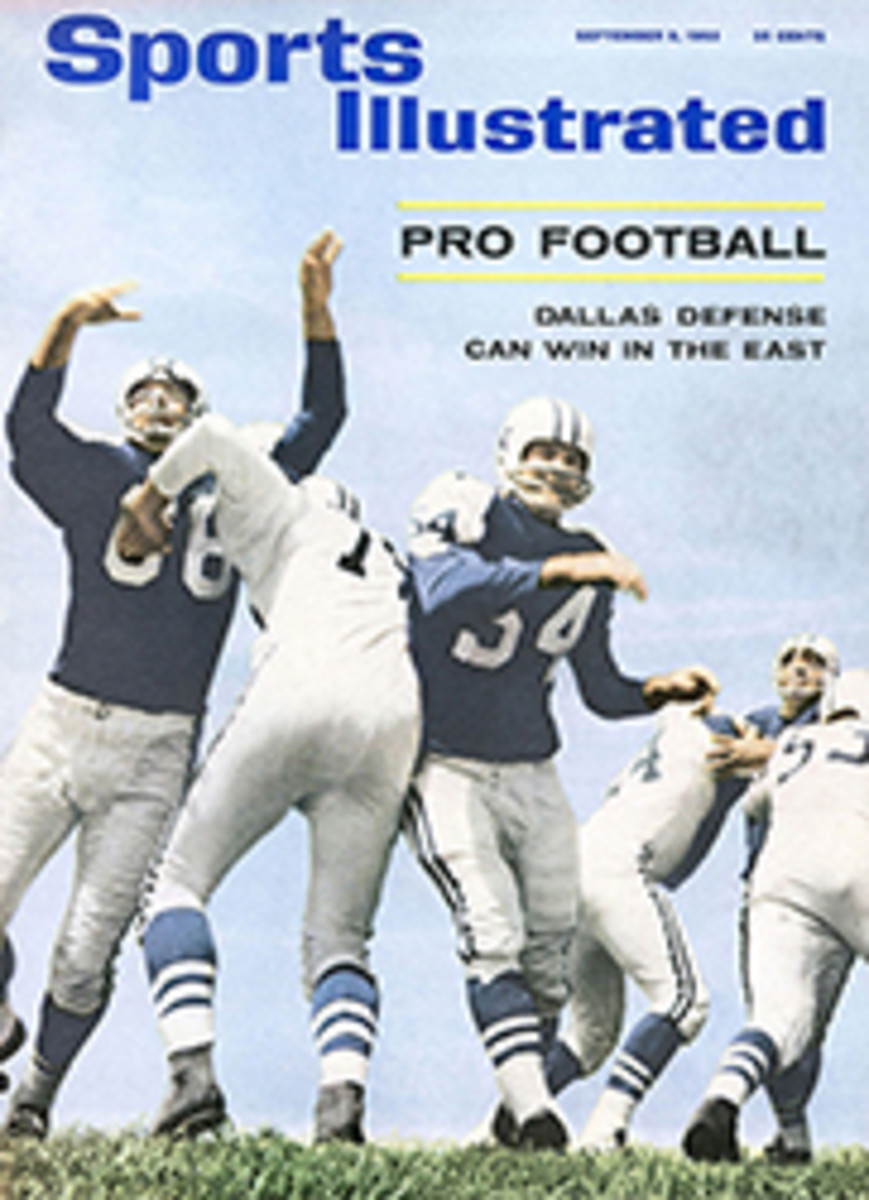
How to Become a Champion Muck Crawler
Getting-ready games are a parasitical genus of recreational activities which infest all minor-minor or way-out-in-left-field sports. (For example, Shrew Breeding, a relatively uncomplicated minor-minor, has two officially recognized, demanding getting-ready games: Baiting the Shrew and Shrew Taming.)
In the 1930s my family set out to play the left-field sport of Archery Golf. A predilection for minor-minor sports taints our line as degeneracy marks the Jukes. A gaggle of aunts, uncles, cousins, in-laws and fiancés congregated for economic reasons (they were all broke) on the shores of a shallow Michigan lake where in easier times my grandfather had bought and developed a sandy quarter section. It was a halcyon time for minor-minor sports. We had iceboaters, frog giggers, aquatic croquet players, rock hounds, lawn bowlers, a badger baiter and a black bear tamer, among the more describable left-fielders.
Initially we had one archer, my Uncle Bryan. At that time archery was still sufficiently minor to appeal to my kin, and we commenced the necessary getting-ready games. We hewed the Osage orange and hickory, dried the wood, shaped the bows, tipped the arrows, collected the feathers and braided the bowstrings. Somebody's boyfriend was on a Jack London jag and read that the finest bowstrings were woven from human hair. Immediately a squad of uncles set out after a pale, timid second cousin, a girl distinguished only by a luxuriant swatch of hair that hung to her waist. The clash between the child's mother and the avid fletchers was awesome. The girl escaped unshorn, but the experience so unsettled the mother that she fled to San Diego, taking the crowning glory with her.
By spring everyone had a bow, or rather bows, target bows, hunting bows, ladies' bows, junior bows, bows to use when the wind was from the northwest, hot-weather bows. Shortly, however, the joys of shooting at targets, water snakes, spawning carp and duckboats began to pall. Then somebody (no one ever confessed) heard about or conceived Archery Golf. Archery Golf is a straightforward left-field sport. From tee to green the player uses a bow and arrow instead of a golf club and ball. On the green a ball is substituted for the arrow, and the player putts out. We had, Lord knows, the bows and arrows and also putters and golf balls. All that we lacked was a golf course, but there were a lot of those about. However, as reports began to come in describing the stubborn reluctance of greens committees to permit Archery Golf, it became apparent that getting a golf course was the principal getting-ready game of this sport. Eventually the owner of a poorly played public course agreed to allow early-morning Archery Golf. We played there only once. The fourth green was masked by a sharp, woody dogleg. An Archery Golfer has no problem getting loft on his shots. The first foursome elected to play over the trees, and all let fly at once. Rounding the turn, they found an elderly, early-rising realtor on the green encircled by quivering shafts. He was unhurt but an arrow had penetrated his golf bag.
"Sorry," shouted Bryan. "Take your time—we didn't mean to rush you."
My relatives saw they would have to create their own golf course. There were 60 acres of abandoned sheep pasture behind the lake cottages. The original intent was to outline two or three areas more as archery ranges than regular golf holes, but somehow we ended up with a rude but recognizable nine-hole golf course. Interest immediately flagged in archery, and the course was turned over to conventional golfers. For 15 years the course rode on our backs like a great seed-and-fertilizer-devouring elephant. After the war the golf course was sold and subdivided into a housing development. Its demise was unmourned by all. It does seem though that someplace, perhaps on the garbage cans which now stand on what was the third green, there should at least be a plaque commemorating the site of one of the most formidable getting-ready efforts in the history of minor-minor sports.
Turtle Racing was another family left-field sport. For Turtle Racing a ring is drawn (20 feet is the official diameter). The entries, none with more than a three-inch shell span, are contained under a dishpan at the center of the circle. On signal the pan is removed and the first speedster to cross the ring is the winner. We had a permanent, banked track on the beach. Big-time operators had screened paddocks at the water's edge. Shoestring owners stabled their stock in washbasins and goldfish bowls. Painted turtles were the most dependable breed. Snappers were sulky and box turtles slow out of the gate. Leatherbacks were swift but so carnivorously inclined that often when the starting pan was lifted they would be found gnawing on the leg of another entry. We trained running turtles on grass frogs. Frog meat develops stamina, and by dropping a frog into their stall we could give our charges a brisk morning workout. This, of course, was the derivation of the game of Frog Pounce. However, the truly ferocious getting-ready game of Turtle Racing is Muck Crawling. Good racing turtles do not inhabit sandy beaches or crystal pools. They live in rank, murky swamps. To get them you must Muck Crawl.
The making of a Turtle Racer and a Muck Crawler out of Woody, a lakeside neighbor, illustrates several common getting-ready pitfalls. Woody was a sculptor from Chicago who rented a cottage just south of our family compound, adjacent to our turtle track. Every evening all of us who were not watching the golf course gathered for a 20 or 30 race card. The action might not have impressed Nick the Greek, but it was spirited. One evening a bottle of Scotch, a tricycle, a Monopoly game and nearly $12 changed hands.
One night Woody asked if the field was open. He was welcomed. Then he asked to borrow an entry. When it is considered that my sister once got a fairly watertight canoe for Red Star, a prized painted turtle, it is understandable that we owners reacted as Horace Stoneham might if Phil Wrigley asked for the temporary use of Willie Mays.
"Well, where do you get them?" Woody asked peevishly. "Just pick them up?"
"That's it, just pick them up," we said, avoiding his trusting eyes.
Woody began to neglect his chisels and clay to wander along the lakeshore looking for turtles. He found only spavined snappers, and it cost him a case of beer to learn how inadequate these beasts were. He might never have advanced (or sunk) further had he not struck upon one of the soundest of all getting-ready plays—sneakiness. One afternoon Woody tailed a featherbrained cousin to the edge of the mosquito-infested swamp that lay half a mile inland from the lake. My cousin was getting ready to Muck Crawl, stripping down to sneakers and shorts when Woody came up.
"Is this where you get those mud turtles?" Woody asked, looking distastefully at the oozing stew of humus and rank water.
"Well, sort of," my cousin admitted.
"How about catching me a couple?" Woody asked ingratiatingly.
My cousin was stupid but not crazy. "Suppose I caught you one that beat mine. Uh-uh," he said. This cousin was also too good-hearted to be anything but a mediocre getting-ready gamester. "I'll show you how you can catch them, though," he told Woody. A saucer-sized turtle, well over the legal racing size, was sunning on a log 50 feet out in the swamp. My cousin slipped into the mire and made an easy stalk. He lay down and inched forward, propelling himself with his elbows and toes, with only the top of his head showing above the slime. When the turtle made a break, my cousin leaped and fell forward, submerging in the swamp but pinning the turtle down under his chest. He came back, bringing the beast to show Woody.
Woody eyed my cousin, who, after releasing the turtle, had begun picking leeches from his legs. "Do all of you get turtles this way?"
"Yeh," said my cousin. "Well, grandma doesn't but she catches grass frogs for Peggy and she gets her turtles."
Whatever inner torment he went through, the result was that Woody became a Muck Crawler and eventually assembled a respectable stable of racing turtles. In fact, he became addicted to Muck Crawling, developing a compulsion to slither through swamps even when he no longer needed turtles. Muck Crawling permanently colored his view of artistic reality. Bogs have influenced Woody's sculpture as markedly as owls have Picasso. His most ambitious piece is a lump of bronze called Two Turtles in the Spatterdock Pads.
Careful study of Woody's trials and the other cases reported here will enable the novice to comprehend the general laws of getting-ready play. Stated in nontechnical language, these are:
Every minor-minor sport has getting-ready games, the play of which invariably scars, frustrates and humiliates the player. Getting-ready rules are as vague as a Sibylline prophecy. Beginners often do not see getting-ready games or regard what they do see as inconsequential. Experienced players do not tell new players how to play or even what is being played. Veterans take misery-loves-company pleasure in watching a rookie fall on his face. Getting-ready games are addictive. Since this play has no proper beginning, ending or scoring system, a player who once commences is in mortal peril of never quitting.
Mastery of these fundamentals gives a player a tremendous initial advantage in all getting-ready games. For example, assume that in the current issue of Actual Factual, The Magazine of Reality for Men, there is an essay, How I Hunt Deer with a Cheetah. The subtitle is "Little Known Thrill Sport." The novice minor sport who is inflamed by this article immediately begins to contemplate the distant Everest, the exaltation he will experience in company with his hunting cheetah. This, after all, is all that the article describes. Inevitably, adopting this approach, the beginner will end up being treated for either cheetah bites or paranoia.
The veteran left-fielder who reads and is equally stirred by this piece will resolutely refuse to think about the ultimate objective, hunting with a cheetah. He will begin dispassionately to examine the proposition in terms of getting-ready play. The subtitle "Little Known" indicates that he is dealing with a legitimate minor-minor sport. The nouns and pronouns, "I," "cheetah," "deer," hint at a series of fierce cooperative getting-ready games. How, for example, do he, a cheetah and a deer meet, and how does each learn his proper role? How and where do cheetahs occupy themselves when not hunting deer? Do cheetahs get carsick? State Police and cheetahs? Expertly the veteran identifies the obvious getting-ready games of this minor-minor: Safari Play, Cheetah Crating, Worms and Cheetahs, Knitting (cheetahs wear red stocking caps during their training period), Cocker Spaniel Dodge, Managing a Deer Herd, Hide the Cheetah, and Seek the Cheetah.
The canny veteran now assumes the classic first position of getting-ready play. Physically, intellectually and spiritually, he extends his hands and gropes forward as though working without a lamp in a deserted mine shaft. It is an awkward stance, and proceeding in this manner it may take a decade before he becomes a Cheetah Hunter. However, this is the only position which can be recommended. Such a posture gives the minor-minor sport at least a fighting chance of reaching his objective without being mangled in the hard getting-ready play that inevitably awaits him.
THREE ILLUSTRATIONS

